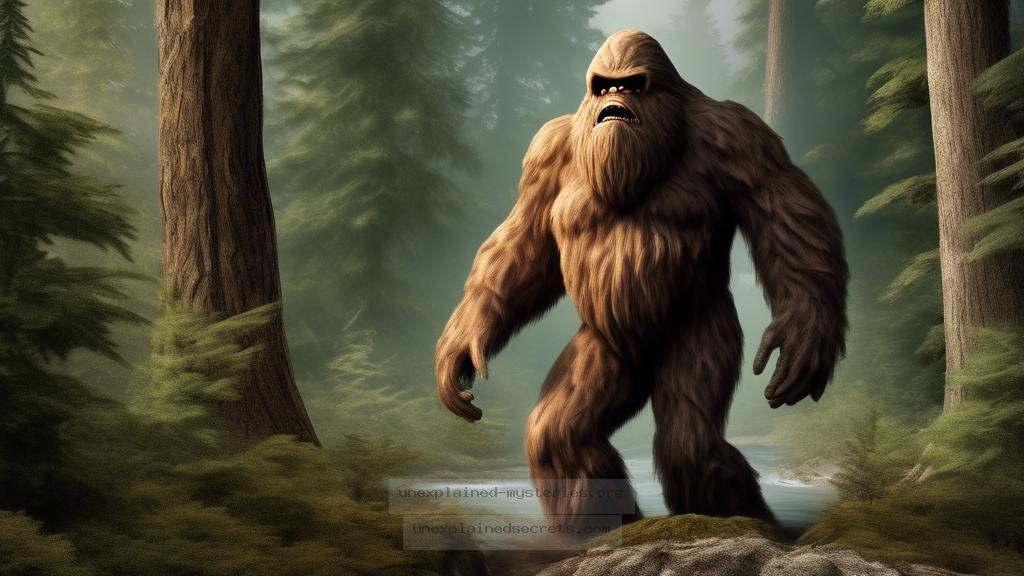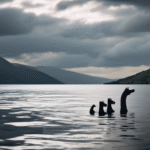What Compelling Evidence Exists for the Existence of Bigfoot?
What Compelling Evidence Exists for the Existence of Bigfoot?
The question of Bigfoot’s existence has captivated enthusiasts and skeptics alike for decades. Whether you view Bigfoot as a myth or a living creature, the evidence surrounding it is both intriguing and perplexing. The quest for Bigfoot has spurred countless investigations, documentaries, and even academic studies. In this blog post, we will explore the compelling evidence that has been presented over the years, delving into the historical context, core concepts, and ongoing research that keep the mystery alive. 🌲🔍
Historical Context: The Origins of Bigfoot Lore
The legend of Bigfoot, also known as Sasquatch, has roots that extend deep into the cultural histories of various Indigenous peoples in North America. Many Native American tribes have their own stories of large, hairy humanoid creatures that inhabit the forests. These tales date back centuries and often depict Bigfoot as a guardian of the forest, a creature of great strength and wisdom.
The first documented sighting of what we now refer to as Bigfoot occurred in the late 1800s, with reports from miners in California’s Sierra Nevada mountains describing a large, ape-like creature. However, it wasn’t until the 1950s that the term “Bigfoot” gained popularity, particularly after a series of alleged sightings and the infamous Patterson-Gimlin film in 1967, which purportedly captured footage of the creature walking through the woods. This film remains one of the most discussed pieces of evidence in the Bigfoot community.
Core Concepts: Types of Evidence
Evidence supporting the existence of Bigfoot can be categorized into several types:
- Photographic Evidence: Includes the Patterson-Gimlin film and other photos claiming to show the creature.
- Physical Evidence: Tracks, hair samples, and other biological materials purportedly linked to Bigfoot.
- Audio Evidence: Recordings of supposed Bigfoot vocalizations, known as “Sasquatch calls.”
- Eyewitness Accounts: Personal testimonies from individuals claiming to have encountered Bigfoot.
Each type of evidence has its strengths and weaknesses, often leading to ongoing debates within the cryptozoological community. 💬
Photographic Evidence: The Patterson-Gimlin Film
The Patterson-Gimlin film remains the most famous piece of evidence for Bigfoot’s existence. Shot in 1967 in Bluff Creek, California, the footage depicts a large, bipedal creature walking through the forest. Critics have argued that the film could be a hoax, citing the costume theory, while proponents insist that the creature’s movement and anatomy are too realistic to be a man in a suit.
Numerous experts have analyzed the film, with some claiming that the gait and musculature of the creature are unlike those of a human. Recent advancements in technology have allowed for enhanced analysis, reigniting interest in the film and fueling debates. This evidence has not only captivated the public but has also become a cultural touchstone in discussions about cryptids.
Physical Evidence: Tracks and Hair Samples
Physical evidence, particularly footprints attributed to Bigfoot, has been a significant part of the mythos. Many enthusiasts have claimed to discover large, human-like footprints in remote areas, often measuring up to 24 inches in length. The most famous trackway was found in the 1950s by Jerry Crew in Bluff Creek, California. Subsequent investigations revealed castings of these footprints that continue to be analyzed.
Did You Know? Some researchers argue that the unique shape of Bigfoot footprints, with a mid-tarsal break not found in humans, supports the idea of a different species. 🦶
In addition to tracks, hair samples have also been collected over the years. Some of these samples have been subjected to DNA testing, with mixed results. While some tests have shown that the hair belongs to known animals, others have been inconclusive, leading to speculation about the creature’s biological makeup. ⚗️
Audio Evidence: The Sounds of Sasquatch
Audio evidence has emerged as another fascinating aspect of Bigfoot research. Recordings of strange vocalizations, often described as whoops, howls, or screams, have been captured in various locations known for Bigfoot sightings. One of the most famous recordings is the Sierra Sounds, recorded in the 1970s by Ron Morehead and his companions in the Sierra Nevada mountains.
These vocalizations are often analyzed for their acoustic properties, with some researchers suggesting that they could represent a unique form of communication among a previously unknown species. While skeptics argue that these sounds can be attributed to known animals, the debate continues as enthusiasts search for more evidence. 🎶
Eyewitness Accounts: Personal Testimonies
Perhaps the most compelling evidence comes from eyewitness accounts. Thousands of people have reported seeing Bigfoot throughout North America, with many describing similar physical characteristics: a large, muscular build, covered in dark hair, and standing upright. These accounts often include detailed descriptions of the creature’s behavior, with witnesses reporting a range of emotions from fear to awe.
One notable case is that of the “Skookum Cast,” where a group of individuals claimed to have found an imprint in mud that matched the outline of a large creature resting in a sitting position. Eyewitness testimonies, while anecdotal, provide a rich tapestry of experiences that fuel both belief and skepticism in the Bigfoot phenomenon. 🗣️
Alternative Perspectives: Skepticism and Criticism
While many people are fascinated by Bigfoot, skepticism remains a crucial part of the conversation. Critics argue that much of the evidence is circumstantial, easily explained by hoaxes, misidentifications, or psychological phenomena like pareidolia, where the human brain recognizes patterns where none exist. For example, some alleged footprints have been shown to be created by individuals using carved wooden feet, further complicating the search for credible evidence.
Furthermore, many scientists dismiss Bigfoot as a myth due to the lack of physical specimens, such as bones or remains, that could provide irrefutable evidence of its existence. The absence of concrete proof raises questions about the validity of eyewitness accounts and the reliability of photographic and audio evidence. 🔍
Common Misconceptions: Addressing the Myths
Several misconceptions about Bigfoot perpetuate the debate surrounding its existence. One common myth is that all sightings are hoaxes. While some have indeed been proven false, many credible witnesses have reported their experiences without any financial or personal incentive. Additionally, the idea that Bigfoot must be a single creature rather than a species is another misconception; proponents argue that if Bigfoot exists, it could be a population of similar beings, not just one elusive individual.
Myth Buster: Many people believe that Bigfoot is just a modern myth, but accounts of similar creatures span cultures worldwide, suggesting a deeper historical context. 🌎
Best Practices for Investigation: How to Study Bigfoot
For those interested in investigating the possibility of Bigfoot’s existence, there are several best practices to consider. First, it’s essential to approach the subject scientifically and be open to both evidence and skepticism. Here are some tips for aspiring Bigfoot researchers:
- Document Everything: Keep detailed records of sightings, environments, and conditions during encounters.
- Use Technology: Employ audio recording devices, cameras with night vision, and thermal imaging to capture evidence.
- Collaborate: Work with other enthusiasts and researchers to share findings and insights.
- Respect Nature: Always practice ethical fieldwork and respect wildlife and natural habitats.
By following these practices, investigators can contribute meaningfully to the body of research surrounding Bigfoot and potentially uncover new evidence. 🕵️♂️
Future Developments: Ongoing Research and Exploration
As the search for Bigfoot continues, researchers are employing new technologies and methodologies to explore the mystery further. Genetic testing of hair samples is becoming more advanced, and the use of drones and remote cameras in dense forest areas may yield new insights. Citizen science initiatives that involve the public in research efforts are also gaining traction, allowing individuals to contribute their findings through apps and online platforms.
Additionally, documentaries and podcasts dedicated to Bigfoot are increasing public interest and funding for research. As the scientific community becomes more open to the exploration of cryptids, the potential for groundbreaking discoveries remains ever-present. 🔮
Conclusion: The Ongoing Mystery of Bigfoot
The evidence for Bigfoot’s existence is multifaceted and continues to be the subject of heated debate. With a rich historical context, a diverse array of evidence types, and passionate advocates on both sides, the mystery of Bigfoot persists. While skepticism remains a critical part of the discussion, the allure of uncovering the truth about this legendary creature motivates researchers and enthusiasts alike. As we look to the future, the possibility of discovering new evidence keeps the legend of Bigfoot alive, inviting us all to ponder the unknown. 🌌
Other Articles
Recent Posts
- What Happened to Flight MH370? The Conspiracy Theories That Still Haunt Us
- What Secrets Lurk Within the Walls of the Infamous Trans-Allegheny Lunatic Asylum?
- What Evidence Supports the Existence of Bigfoot in the Pacific Northwest?
- What Happened to the Indus Valley Civilization? Unraveling the Mysteries of Ancient Urban Life
- Can Telepathy Be Scientifically Proven Through Laboratory Evidence?







